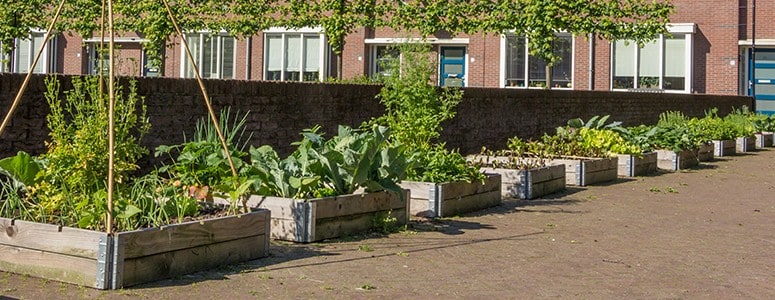Not only are they beautiful and useful, urban gardens are extremely sustainable as well. They help operations make better use of unused space and less farmland.
Vertical gardens allow producers to grow foods in vertical layers. Some are so sophisticated they can even be indoors, using artificial light and controlling the environment. The great thing about vertical farms is the reduction of “food miles.” You are closer to the food source and you can grow what you need, reducing food waste.
See what Skyline Farms Is Doing

Skyline Farms in Canada has built a farming model that uses less space, less water, fewer nutrients and no pesticides—all within closer reach of operators, saving on fuel consumption and carbon emissions. Their model can produce 7.7 harvests (more than double than soil-based methods in the same growing period). Plus there’s no use of oil-intensive pesticides or fertilizers.
How do they achieve this ultra-efficient growing situation? Skyline revitalizes and rehabilitates unused and under-utilized urban spaces—on land and rooftops—to create vertical tower gardens that can be harvested all year long. They use aeroponic technology which consumes water in a closed loop. Crops only take what they need and recycle the rest back into the reservoirs. They only use about 10% of the water consumed in traditional farming methods.
Do you have an unaccounted for wall or rooftop that could be transformed into a prime garden space? Get to planting! If not, a solid alternative is to find a community garden in your city you can be a part of.




